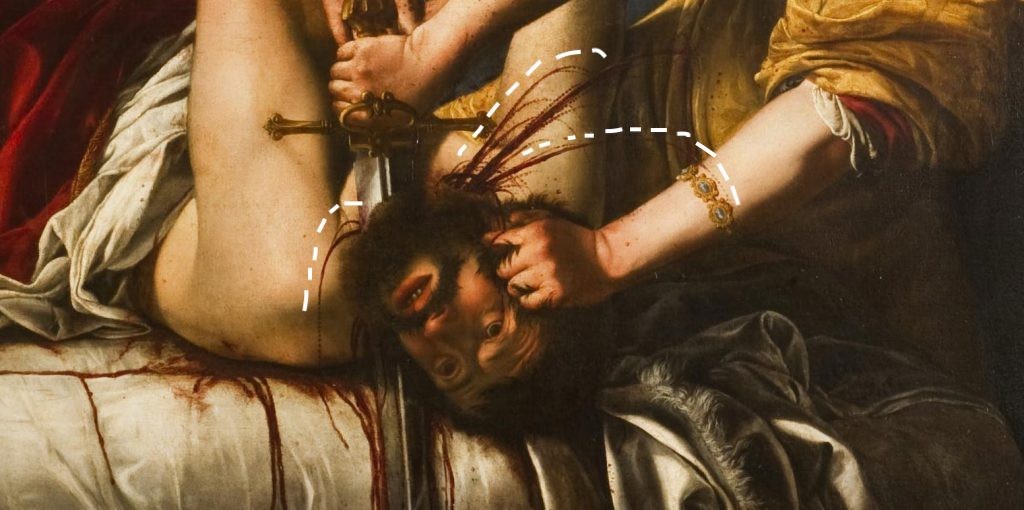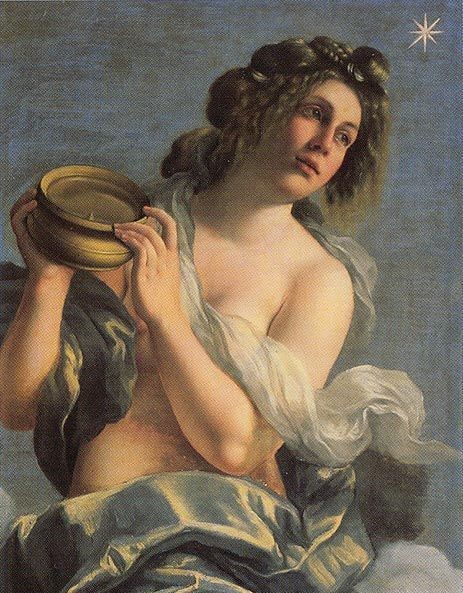In 1784, a graphic and violent painting depicting the biblical scene of Judith slaying Holofernes was found in a dark staircase of the Uffizi Gallery of Florence, a hiding place to which it had been banished by the Grand Duchess María Luisa of the Medici family, who had found the painting “too horrifying to contemplate.” An accounting record that year attributed the painting to Caravaggio – the most famed of all the baroque Italian painters – so magnificent and horrifying was this work of art.*
But Caravaggio did not paint this painting – nor could he have painted it. In fact, it was one important detail that betrayed the identity of the brilliant painter who instilled “not a little terror” in Florence with such a horrifying painting: the spurt of blood gushing from Holofernes’ neck.
The blood sprayed out in an arc.
Just a few years prior, the astronomer and physicist Galileo Galilei had identified his theory of parabolic projectiles in his studies on projectile motion. His theories being yet unpublished at this time (and for another twenty years after), the artist must have known Galileo. Indeed, Judith Slaying Holofernes (1620-21) belonged to his longtime friend, one of the few female baroque painters, Artemisia Gentileschi.
Before Galileo and Artemisia met, the scientist had already made an impression on Italian painting. Galileo’s own watercolor drafts of the moon, which depicted a pockmarked surface of hills and valleys that he discovered in his studies, contradicted the idealized, celestial portraits of the heavenly bodies. The famous painter Cigoli, also acquainted with Galileo, painted the first fresco of an imperfect moon, with the Mother Mary standing on top of it. In her youth, Artemisia would have almost certainly been acquainted with this painting. Given that her own name Artemisia is in reference to the celestial body, perhaps this painting resonated with her.
But it likely wasn’t until her admission into the Accademia del Disegno in Florence in 1615 – where she was the first woman ever to be admitted – that Artemisia met Galileo. They continued a lifelong friendship, well-documented through decades of personal letters, and references to Galileo appear throughout her work.
In Allegory of Inclination (painted around 1615-1617), the compass held by the nude figure in the oil painting referenced Galileo’s “engagement in the debate over magnetism and movement.” (Artemisia, 2020, page 18). Perhaps it was a visual pun too – with the mariner’s compass a reference to Galileo’s invention of the geometric compass a few decades earlier.
In 1635, she wrote to him in a famous letter, “I have seen myself honored by all the kings and rulers of Europe to whom I have sent my works, not only with great gifts but also with most favored letters, which I keep with me.” Most of her letters to Galileo involve business matters pertaining to painting – like this one which she famously penned, asking Galileo to intercede on her behalf to the Grand Duke Cosimo, who owed her money. And then there’s the 1623 letter to Galileo, in which she asks him to “write to her using Marignghi’s [her lover] name as a cover” (Artemisia, 2020, page 22).
In the 17th century, the exploration of science was a precarious subject – and as we know in Galileo’s case, an offense worthy of exile. Beginning with his realistic renderings of the moon, his studies changed the course of art, religion, and history. It feels not at all coincidental that his work in science also paved the way for women like Artemisia to emerge as some of Europe’s greatest painters.
*Artemisia catalogue by the National Gallery in London, 2020. This book, which contains several essays on Artemesia’s life and work, is referenced several times throughout this article.


